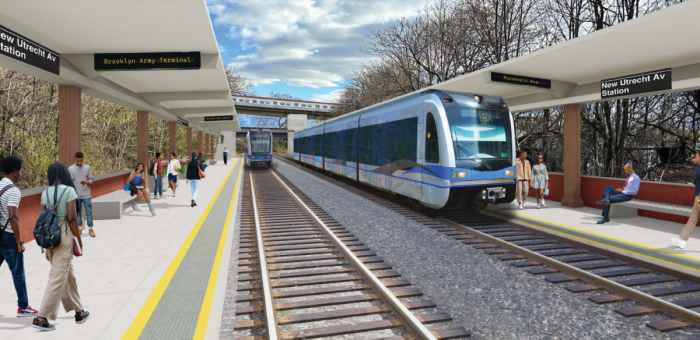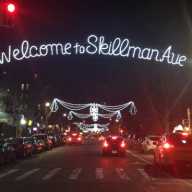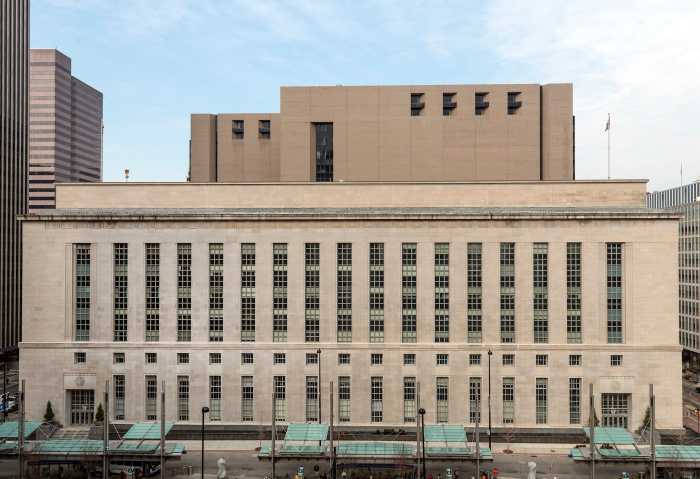The Metropolitan Transportation Authority (MTA) hosted an open house at the Ridgewood Library on March 27 to present detailed plans for the Interborough Express (IBX), a major new rail project designed to improve transit connectivity between Brooklyn and Queens.
The IBX would make use of a 14-mile-long freight rail corridor, running from Jackson Heights in Queens to Sunset Park in Brooklyn, and aims to deliver fast, direct, and reliable service to thousands of commuters in two of New York City’s busiest boroughs.
Charlie Gans, one of the IBX project leads, explained that the goal of the project is not only to address the growing demand for transit between Brooklyn and Queens but also to preserve the capacity of the corridor for future freight expansion.

“The idea is that we’re going to add passenger service next to the existing freight service and still leave room for future freight expansion,” Gans said during the presentation.
“The corridor is very dense and very diverse. The number of people who commute and travel between Brooklyn and Queens is greater than those commuting into Manhattan. They are the ones we are trying to serve with this project.”
According to the MTA, the IBX would introduce 19 new stations along its 14-mile stretch, offering vital connections to 17 subway lines, the Long Island Rail Road (LIRR), and 51 existing bus routes.
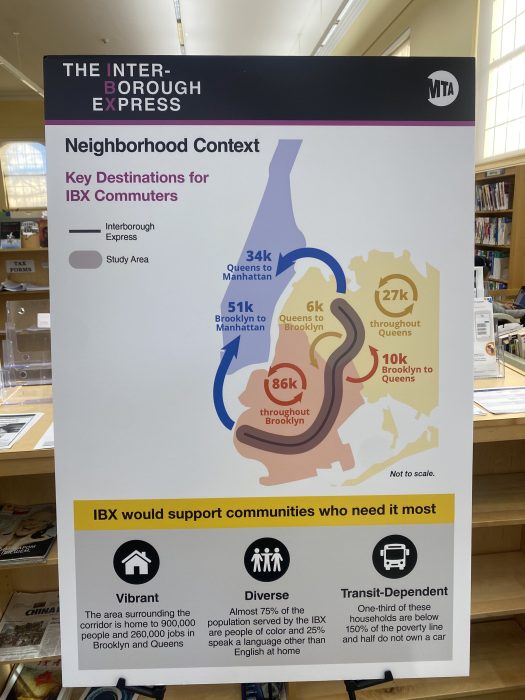
This expansion would significantly enhance transit access for over 900,000 people living in the neighborhoods surrounding the corridor and 260,000 local workers. The project is particularly important for communities currently underserved by subway or other transit services, which often rely on congested streets and long commutes.
The IBX project would utilize the Bay Ridge Branch, a rail line with a long history dating back to its opening in 1876 as part of the New York, Bay Ridge and Jamaica Railroad.
Today, the northern portion of the track is owned by CSX in Queens, while the southern section in Brooklyn is owned by the LIRR and operated by New York & Atlantic Railway. This line last provided passenger rail service in 1924 before being converted to freight use in 1927.
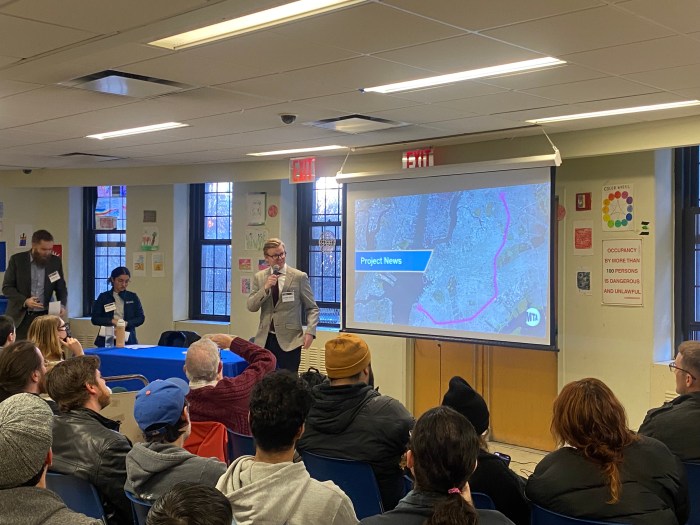
The corridor still serves several freight trains daily, including shipments to Brooklyn’s port facilities and a car float to New Jersey. Under the IBX project, freight service will continue uninterrupted, allowing for the simultaneous operation of passenger and freight trains along the corridor.
The MTA emphasized that the IBX is designed to meet public demand for improved, more reliable transit services between Brooklyn and Queens.
In addition to providing better connections between the two boroughs, the project would offer quicker and more efficient transit for workers, students, and residents traveling to major job centers and improve access to underserved communities.

During the open house, attendees learned that the Port Authority of New York and New Jersey (PANYNJ) is preparing a Tier II Environmental Impact Statement (EIS) for the Cross Harbor Freight Program (CHFP), which includes the IBX project.
This EIS will take about two years to complete. It will include an in-depth assessment of the cumulative impacts of the IBX and other related projects. Completing this environmental review is a necessary step before full construction can begin.
In 2023, the MTA released a Planning and Environmental Linkages Study, which evaluated three potential modes of transit for the IBX: Conventional Rail, Bus Rapid Transit, and Light Rail.
After careful analysis, the study concluded that Light Rail would provide the best balance of service for riders and value for the city. This finding has influenced the ongoing planning and development of the project, with Light Rail expected to be the selected mode of transport.
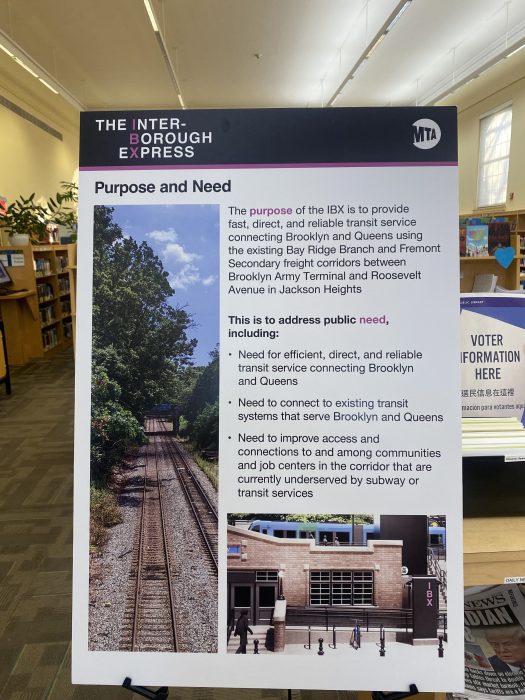
The MTA is also in the process of hiring an engineering consultant to begin the project’s design phase. The agency has already received proposals from several engineering firms, and a contract is expected to be awarded this spring.
The general engineering consultant’s role will be to advance the project’s design to 30% completion. The design phase will include activities such as corridor surveys, bridge inspections, and other site evaluations. The process is expected to take about two years, with construction following once the designs are finalized.
The project has already secured significant funding, with $52 million allocated from the New York State 2025 fiscal year budget. Additionally, the U.S. Department of Transportation has awarded a $15 million federal grant to support the Preliminary Engineering phase of the IBX project.
These funds will help cover the costs associated with the next planning and development steps. Further funding is anticipated in the MTA’s five-year capital plan.
When asked why the IBX will not extend into the Bronx, Gans addressed the issue by explaining that the limitations are due to other major rail projects currently underway in the region.
“With respect to the Bronx, there are limitations. Metro-North is doing an access project, and they are going to be interlining with Amtrak. That project will serve the Bronx,” he said.
He further explained the decision to end the line in Jackson Heights, citing the area’s extensive transit connections.
“In terms of stopping in Queens, we wanted to stop at a place where there are lots of connections. Jackson Heights has that.”
The MTA remains optimistic about the IBX project’s potential to transform transit in Brooklyn and Queens, offering a much-needed solution for commuters.
With the backing of state and federal funding and strong community support, the project is poised to move forward in the coming years, providing critical infrastructure to two of the city’s most dynamic and densely populated boroughs.




